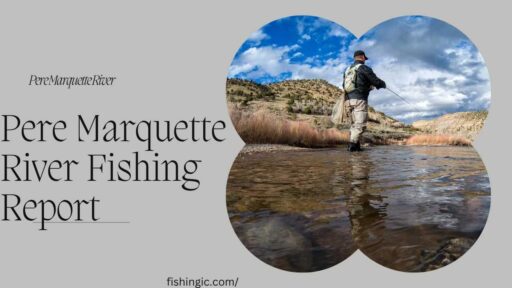Stay updated on Kenai River fish counts and track the population trends of salmon, trout, and other fish species in this iconic Alaskan river.
Fish counts are not mere numbers – they provide a glimpse of how healthy this symbolic Alaskan environment is. A thriving salmon population, sustainable methods of fishing, and a positive future for the Kenai River can be guaranteed when we know how many fish come back every year. Come with us to explore the intriguing world of Kenai River fish counts and see how they are molding the fate of this cherished fishery.
Why is it important to know about the number of fish in the Kenai River?
FISHERY CONSERVATION: Fish counts serve as vital statistics that help assess general health status of fishes in Kenai river by showing trends over time such as decrease or changes in migration patterns.
INFORMED DECISION MAKING: Fish count databases give authority to Alaska department of fisheries and game to undertake different management provisions including setting sport and commercial fishing catch limits thus ensuring that there exists an equilibrium between human harvest and viable populations of fish species.
HABITAT PROTECTION: Knowledge on factors such as water flow, temperature among others has led to efforts geared towards conserving key spawning grounds and juvenile rearing areas as seen from changes in fish count.
Sustainable Recreational Fishing
RUN PREDICTION: This data makes it possible for anglers to accurately predict which dates will have more runs, making their recreational activities more efficient by targeting seasons with high densities of these aquatic species.
CONSERVATION THROUGH AWARENESS: When the public knows about fish count data then responsible angling culture develops. Therefore someone can adjust his/her move based on population condition possibly reducing what he/she catches or extending fishing trips only within periods having strong fish runs.
FUTURE OF THE FISHERY: For recreational fishing at the Kenai River to remain sustainable for a long time then it must have healthy abundant fish populations. Fish count data is used in responsible management to ensure this heritage fishery survives for many generations of fishermen.
In conclusion, knowing Kenai River fish counts goes beyond mere numbers: it is a means of maintaining the health of this important ecosystem, encouraging sustainable fishing practices and ensuring the future of a famous fishery.

What affects Kenai River fish counts?
Kenai River is an Alaskan ecosystem teeming with salmon and other kinds of fish. Natural factors can affect fish numbers in the Kenai River, as explained below:
Natural forces
WATER TEMPERATURE: Salmon(mostly Chinook and Sockeye) are anadromous species meaning they breed in fresh water then mature at sea returning for spawning; therefore, water temperature matters. Usually cooler temperatures are preferred during spawning and early life stages. Temperature fluctuations outside this optimal range can lead to change or fail in survival rates and migrations respectively.
PRECIPITATION AND RIVER FLOW: High rainfall and snowmelt heavily influence river flow. While high flows assist with upstream migration, extreme events can disrupt or challenge juvenile movement patterns into the ocean or upriver within the basin. Conversely, low flows will make migration more difficult but also raise water temperatures, which stress the aquatic fauna present here.
Predation: At various stages of their lives in the Kenai River, fish face predation. Predatory birds such as eagles, mergansers and mammals like bears, otters and even other fish species, are among its predators. Fish survival rates are influenced by fluctuations in predator populations.
Human Activities
Habitat Alteration: Development, logging, and other activities near the river can alter spawning and rearing habitats. The loss of streambank vegetation, increased sedimentation and alterations in water flow can damage fish populations.
Fishing Pressure: Pressures from sport fishing or commercial fishing can affect fish populations. In order to ensure sustainable levels of exploitation and healthy populations of fishes requires regulations and management practices to be put in place.
Climate Change: Climate Change may lead to rising air and water temperatures as well as changes in precipitation patterns and increased ocean acidification, which will have significant impacts on the Kenai River’s fish populations.
Knowing these factors and how they interact is essential for effective fisheries management. Fish counts are monitored by Alaska Department of Fish & Game (ADF&G), By studying this influence they have been able to come up with rules that govern them ensuring a healthy population of Kenai River fishes that can sustainably exploited.
In what way are fish counts done for the Kenai River?
The methods used for counting fish in the Kenai River vary according to the species being counted. Below is a breakdown of the two primary methods:
Sonar Technology
This is primarily done using sonar technology, which estimates passage rates of Chinook (king) salmon through the Kenai River.
There is an underwater sonar device usually placed at a specific river mile around RM 14(River Mile 14) where most upstream migration occurs.
The sonar sends sound waves into the water and then measures echo bouncing back from objects inside it, hence enabling it to detect the presence or absence plus the size of fish passing by that location.
The number of fish passing the sonar site daily is estimated by fisheries technicians based on sonar data.
Eventually, this data is used to assess the overall strength of the Chinook salmon run in a season.
Video Cameras
Cameras can also be used to count fish, especially late-run sockeye salmon at river mile 19, although this is less popular.
With such cameras, technicians keep record of the number and type of fishes that pass through an area visually.
This method may be used together with sonar or as a way of checking up on its accuracy.
Everyone has to confirm that these are estimates and not exact counts.
Accuracy might depend on factors like water clarity, fish behavior, and calibration errors in sonar systems.
In addition to these counts, the Alaska Department of Fish and Game (ADF&G) often uses information from other sources like sport fishing harvest surveys and test netting programs, among others. This helps them get a complete picture of what generally shows up in terms of fish runs health.
Historical trends in Kenai River fish counts
Fish counts on the Kenai River over the years have shown remarkable historical trends in fish populations. For instance, the king salmon, also known as Chinook salmon, has experienced swings in abundance. The historical data shows that high runs of chinook have been followed by low ones in subsequent years. This underscores why there is a need for constant monitoring and adaptive management strategies to ensure the long term survival of fish populations. Similarly, other fish species like sockeye salmon, rainbow trout, and Dolly Varden have shown varying patterns that have directed conservation and management actions.
Analysis of recent Kenai River fish count data
Analysing recent Kenai River fish count data will help us understand where the current population stands for each type of fish and identify areas to watch out for. For example, such data may show a decreasing trend or sudden changes in the numbers of fish, indicating the immediate need for conservation measures. By looking at catch rates, size distribution, and age composition, researchers can evaluate how healthy and productive particular populations of fishes. Additionally, analysing information from different parts of the river will enable the identification of spatial variations in fish populations that may be targeted by programs focused on conservation.
Implications of Kenai River fish counts on fishing regulations
Kenai River fish counts are instrumental in determining fishing regulations as well as bag limits. Through monitoring the total number of those species, authorities may set appropriate quotas with regard to harvest sustainability purposes. If, let’s say, counts made indicated lessening for some species’ numbers, then regulatory agencies might reduce quotas for them or introduce catch-and-release policies as a means to control their capture. Conversely, when the population appears to be thriving, they could increase harvest restrictions; otherwise, the case is.
Challenges in accurately estimating Kenai River fish counts
Accurately estimating Kenai River fish counts faces several challenges especially due to its wide area coverage and complex ecosystem. It is difficult to get representative samples because they are characterised by large size, making it difficult to cover the whole fish population. Again, some environmental factors, such as water turbidity and high water levels, affected visibility and consequently impacted the accuracy of fish counts. Additionally, fish behaviour like migrating or aggregating in specific areas adds complexity to counting them. These challenges require continued research, technological improvements, and partnerships between scientists, fisheries managers, and local communities.
Future prospects for improving Kenai River fish count methods
The future holds promise for improved Kenai River fish count methods due to advances in technology and research. For example, drones fitted with high-resolution cameras that fly over the river can ensure accurate counting of fish from above. Moreover, integrating genetics such as DNA sampling into these counts will make them more precise in determining population sizes for fishes. These are all elements that promote innovation through collaboration between researchers, government agencies, and local communities to develop better approaches to fish counts in managing the Kenai River ecosystem.
FAQs
How often are Kenai River fish counts conducted?
Kenai River fish counts are conducted throughout the year but at different intervals depending on the migratory nature of each species. Some, such as salmon, are monitored intensively during their spawning runs, while others are not monitored so frequently.
Are Kenai River fish counts exclusively done for the sake of conservation?
Though the primary focus of Kenai River fish counts is on conservation, they are also a significant management tool to fix fishing regulations and communicate with sport and commercial anglers about the state of the fish populations.
Are there any specific regulations in place to protect endangered fish species in the Kenai River?
Yes, there are regulations that protect endangered fish species in the Kenai River. For instance, fishing for some species may be limited or banned at certain times of the year so as to prevent overfishing and save endangered stocks from becoming extinct.
Conclusion: The Significance of Kenai River Fish Counts for Conservation and Management
Kenai River fish counting helps us understand more about fish population dynamics, aiding fisheries management and conserving its river ecosystem. By examining various aspects of this exercise, we can delve into historical developments as well as recent data analysis implications for regulations for fishing. Despite many difficulties faced by researchers doing these studies and using technologies such as drones and other machines while counting fish in rivers where they swim too fast, it gives some hope towards ensuring accurate estimates regarding population sizes at least over time, if not concurrently, considering continued use of the latest advances.






